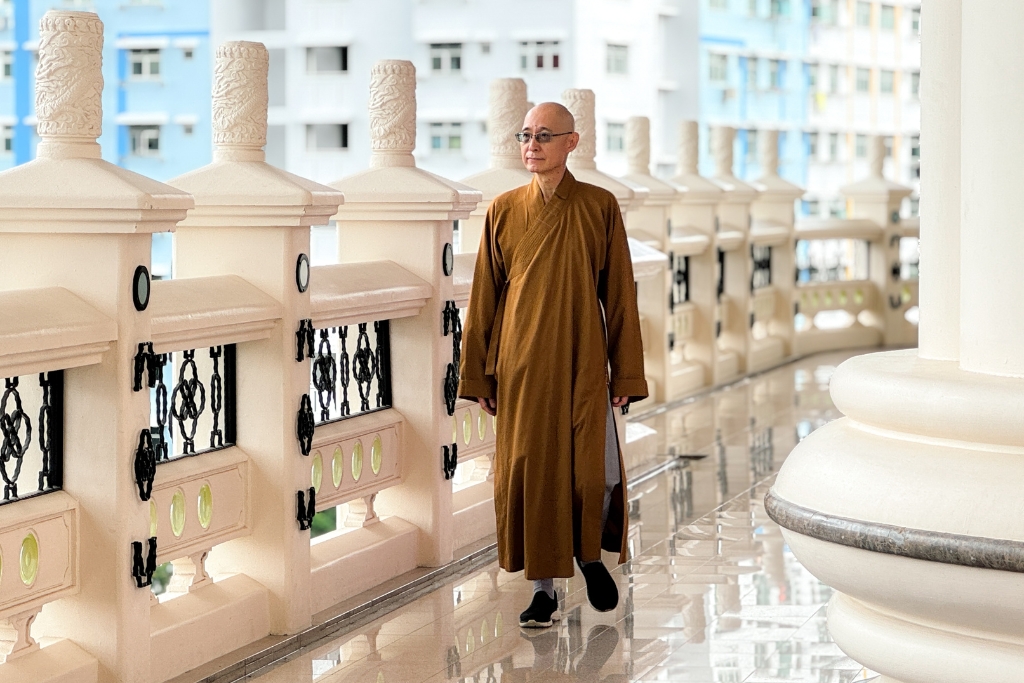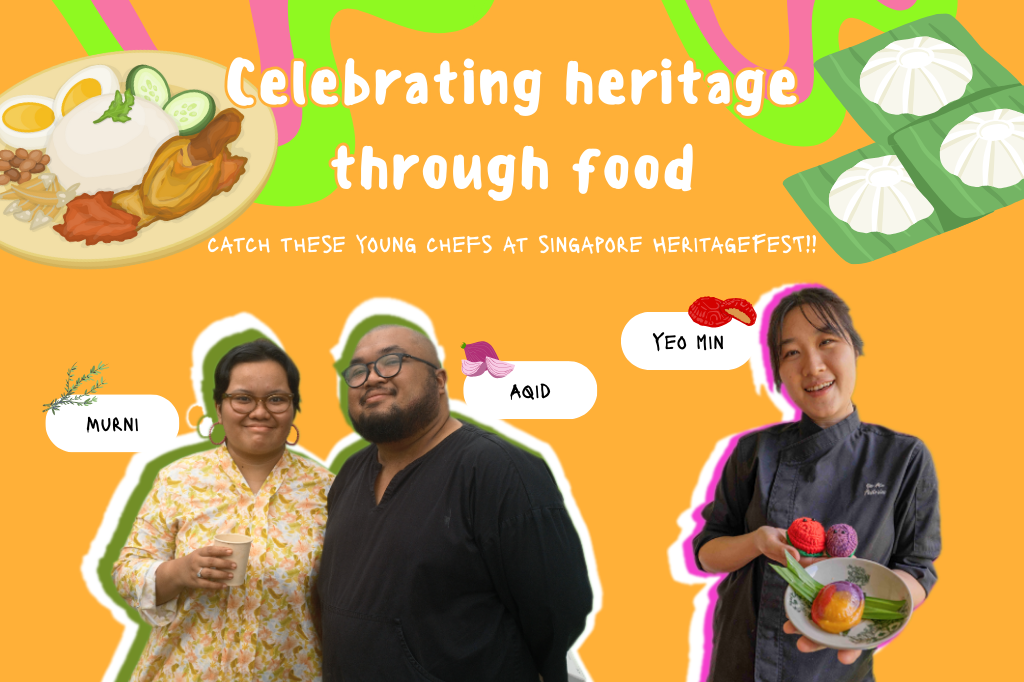Why the Passover still matters today, 3334 years after the first Passover
In multicultural Singapore, festivals such as Deepavali, Chinese New Year, and Hard Raya sound familiar. But what about the Jewish festival of Passover? Though it may be not as well-known, it is the one festival that every Jew will commemorate amongst the Jewish community in Singapore.
- 11 Apr 2022
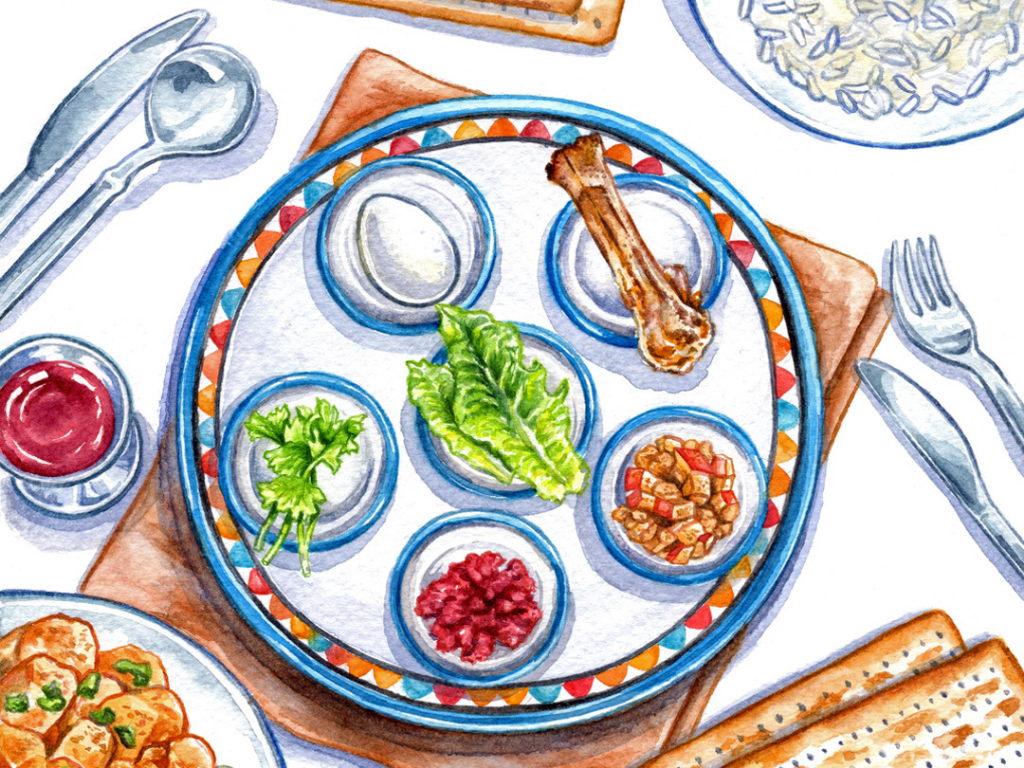
A typical ritual meal, known as the Seder, which is eaten at Passover. (Illustration by Mandy Kew)
What is the Passover?
Whilst the Jewish community in Singapore may be small, numbering 2500, they have made many significant contributions to Singapore. The first Chief Minister of Singapore, David Marshall, was Jewish. Iconic landmarks such as the Jewel at Changi Airport and the Marina Bay Sands were also designed by Moshe Safdie, another famous Jewish architect.
This article will share what the Passover is like, from the writer’s real-life experience of the Passover Seder meal, and an interview with the Chief Rabbi of Singapore, Rabbi Mordechai Abergel.
On the 30th of March 2022, an inter-faith Passover Seder meal was held in the dining hall of the Jacob Ballas Centre. Leaders from various religious communities such as the Christians, Muslims, Taoists, Hindus, Jains, Zoroastrians and the Baha’i took part in a specially arranged Passover Seder.
That evening, walking into the dining room of the Jacob Ballas Center, there’s laughter in the air as representatives, each donning different garments symbolising their faiths, converse. Beautiful chandeliers hang from the ceiling. Uplifting music plays in the background. On the table, there are different foods laid out.
Fresh parsley lies on a plate. Another bowl holds saltwater. There are different spreads on the table, such as a horseradish sauce and a sweet, brown sauce, made from grated apples, cinnamon and sweet red wine (Charoset). There’s also a biscuit-like cracker on the table and a bowl of hardboiled eggs.
Soon, Rabbi Abergel, the Chief Rabbi of Singapore, takes the room of participants through the ceremony. He explains the story of the Passover.
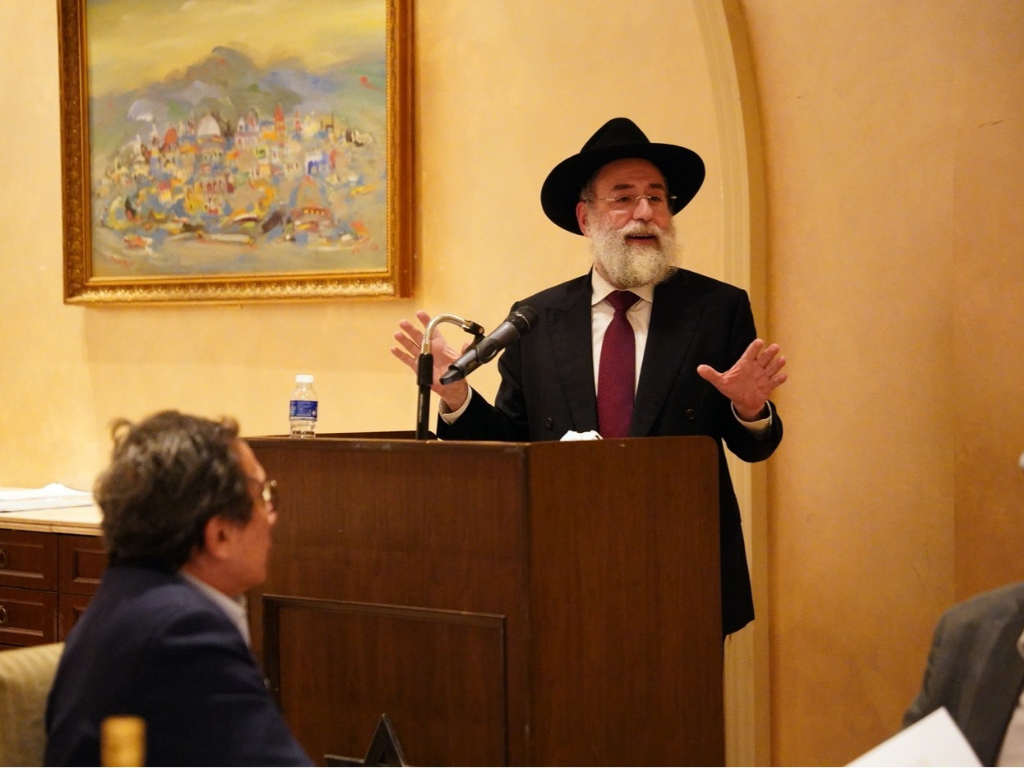
Rabbi Abergel explaining the significance of the Passover
What is the story behind the Passover?
The Passover Seder is a major Jewish religious festival celebrating the freedom of the Israelites from slavery in ancient Egypt for 86 years (out of 210 years they stayed in Egypt). According to the Book of Exodus from the Old Testament, Moses was commanded to tell the Israelites to make a mark with lamb’s blood above their door so that the Angel of Death would pass over them, keeping them safe.
This occasion is celebrated every year by the Jews.
But Rabbi Abergel is keen to emphasise that the Passover is not only about the story of the Israelites’ freedom from slavery.
There’s a wider significance.
What is the significance behind the Passover?
The first is the concept of freedom. Rabbi Abergel explains: “Yes, we celebrate a historical event. But we also celebrate this concept of freedom. You can have bondage in an existential way. In a free society like Singapore, you may think of yourself as being 100% free.”
“But the question is, really, are you free?” he muses, “Because you may be in bondage to certain weaknesses, negative traits. So the process of the Exodus is one that’s very real. It speaks to the present and not just to the past.”
But of greater importance is the passing down of values from one generation to the other. Rabbi Abergel shares, “Moses, after 210 years in Egypt, is delivering his first speech, and what is he talking about? Education?”
“The first thing he says is: you shall tell your children. He hammers that three times. So the night of Passover is centered on the kids. The spiritual patrimony that we have and want to pass on to our children, and to speak about the idea of freedom in a meaningful way. The freedom to be able to fulfil your destiny, to fulfil your potential, the purpose of which you were called to.”
During the Passover, the children are encouraged to ask questions about what each part of the ceremony represents. This promotes dialogue and learning about the deeper meaning behind the Passover.
The Haggadah is the Jewish text that guides Jews through the order of the Passover Seder and the story of the exodus. In it, there are the insights and prayers that accompany the foods to be eaten in a set order.
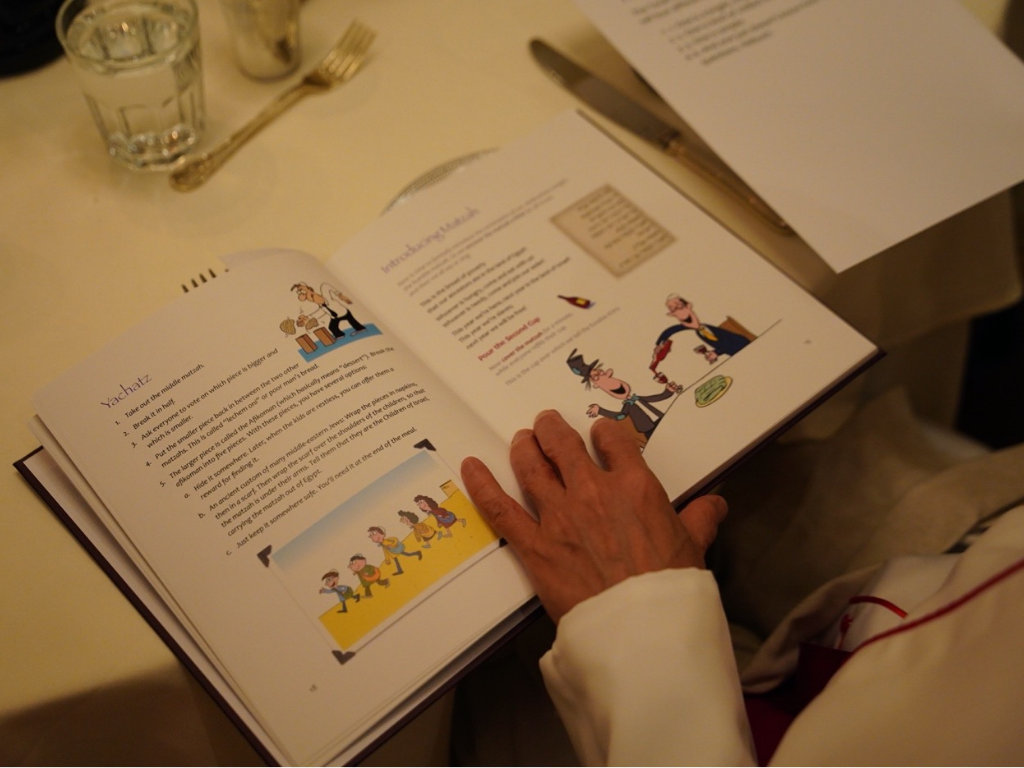
A modern day version of the Haggadah, the text used to guide the Passover ceremony
The various foods in the Passover meal symbolise the different elements of suffering the Israelites went through.
What do the foods represent?
There’s a significance to each item on the table.
The ceremony first starts with the reciting of the kiddush, to usher in the festival and sanctify it. Following this, the first (of four) cups of wine is drunk. The wine symbolises joy.
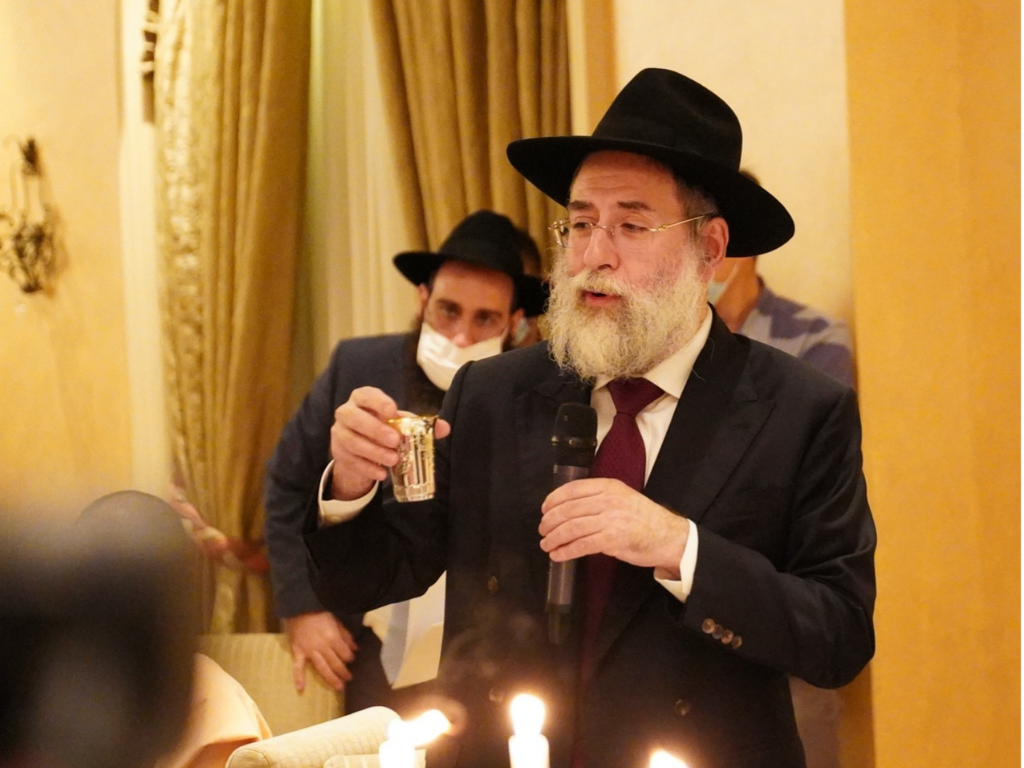
Rabbi Abergel raising the first toast of the evening
After reciting the story of the exodus, the unleavened bread (Matzah) is eaten. Matzah represents the ‘bread of poverty’, alluding to the haste with which the Israelites left Egypt.
Due to their haste, they did not have time to let the yeast work through the bread, making the bread rise.
The bitter herbs represent the suffering that the Israelites went through during their slavery in Egypt. It is dipped in salt water, which symbolises the tears shed as part of their suffering.
Then there is a roasted shank bone (without any meat) to represent the Pascal sacrifice. The blood of the Pascal sacrifice was spread over the doorposts of the Israelites’ home, which eventually spared them from the plague of the first born when every Egyptian first born died on the first Passover night. However, since this was an inter-faith meal, the shank bone was omitted to be more inclusive to all religions.
There is also an egg to symbolise spring and the circle of life.
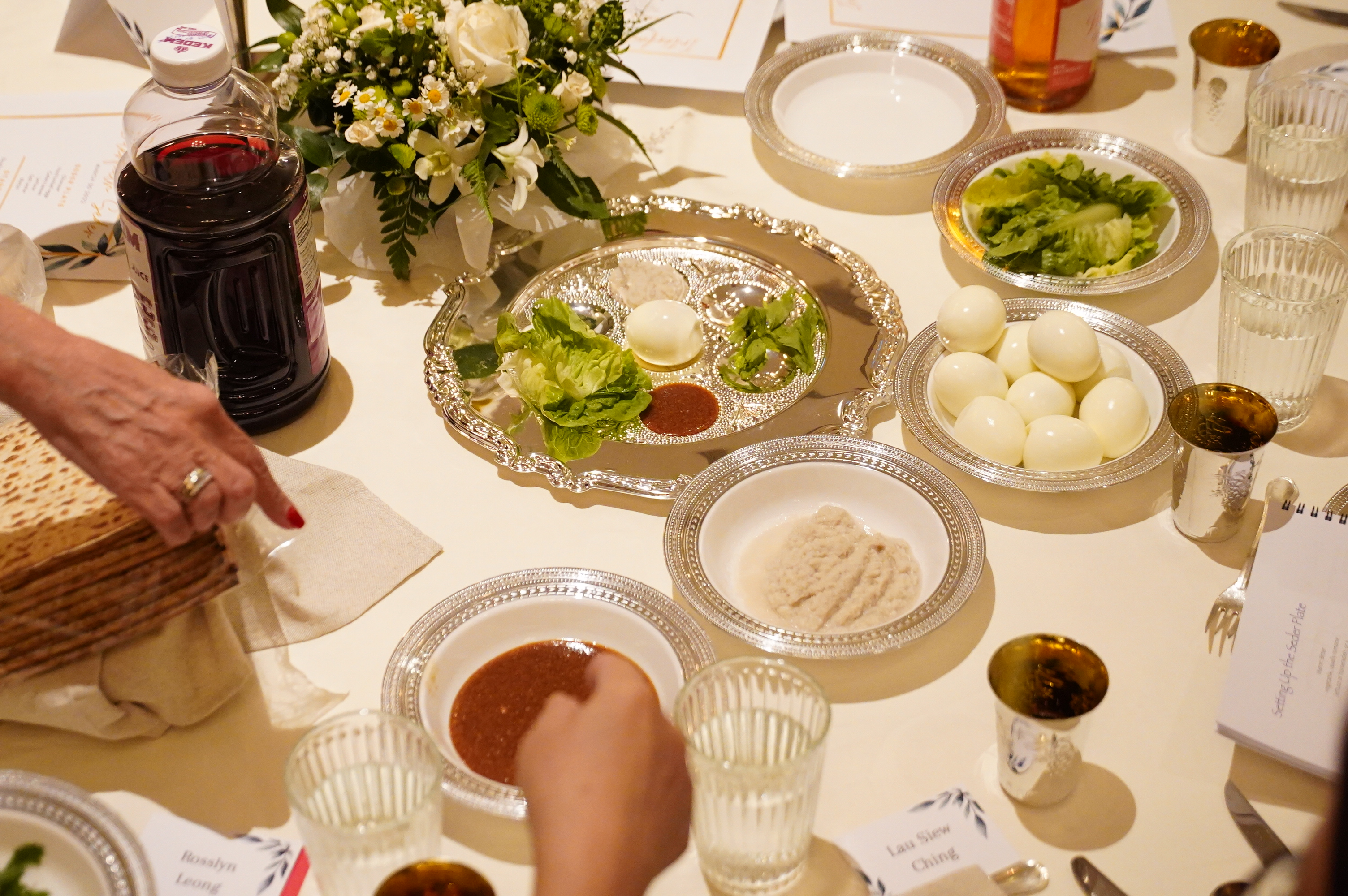
From left to right - the unleavened bread matzah (below the hand), the apple sauce, the horseradish sauce, the eggs, the vegetable (karpas), and the bowl of salt water
Rabbi Abergel explains that the traditional ceremony can often take more than 5 hours. As the meal usually only starts after nightfall (representing the night the Israelites left Egypt), there are times when the dialogue during the meal about the various elements of Passover only ends after 1am.
Why celebrate the Passover today?
As Rabbi Abergel prepared to end the night, he closed with a question: “During the Passover, why do we talk so much about leaving Egypt, and not so much about reaching the Promised Land?”
He explains that it’s a reminder. “That we may never reach where we want to be. But even though we do not reach our ‘Promised Land’, we don’t let the suffering define us. Our bodies may be subjugated, but never our souls. We are reminded to be thankful for what was. To count our blessings,”
Whilst the Passover may have ‘passed’ 3334 years ago, it is still remembered today by Jews, to celebrate their freedom from slavery. It also reminds them, and also us, today, that despite our present suffering, we can still count our blessings.




